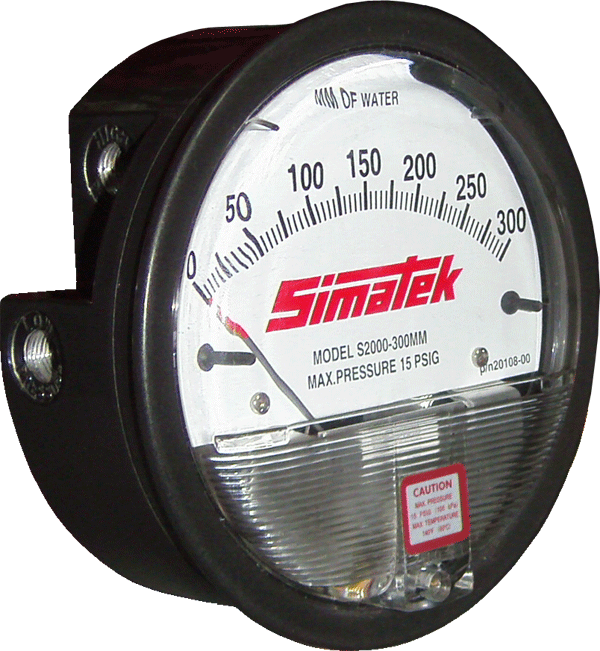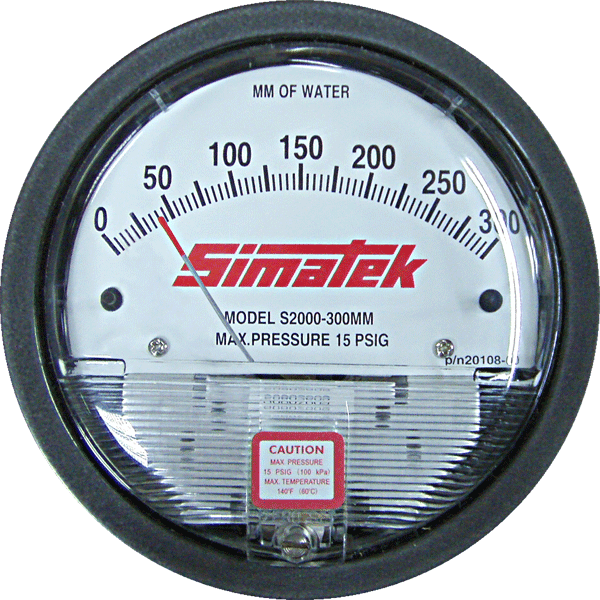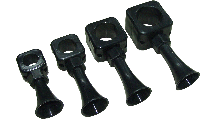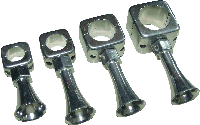Differential Pressure Gages
Differential Pressure gauge are indicated the pressure drop between inside and out side bags.
The Series S2000 differential pressure gauges are low cost, diaphragm operated, mechanical pressure gauges. The S2000 gage can be used in applications for measuring positive, negative, or differential pressure with an accuracy of 2%. Standard applications include monitoring flter status, duct static pressure, room pressure, fan or blower pressure, paint booths, dust collectors, and cabinet purging along with many others.


Specifications
Pressure Limits: -20” Hg to 15 PSI (-0.677 bar to 1.034 bar); MP option: 35 PSI (2.41 bar); HP option: 80 PSI (5.52 bar)
Media Compatibility: Air and compatible non combustible gasses
Accuracy: +/- 2% full scale (+/-3% on –0 and +/-4% on -00) throughout range at 70° F(21 °C)
Temperature Range: 20 to 140° F(-6.7 to 60°C)
Process Connections: 1/8” female NPT duplicate high and low pressure taps - one pair side and one pair back.
Housing: Die cast aluminum case and bezel, with acrylic cover
Weight: 1 lb 2 oz (510 g), MP & HP 2 lb 2oz (963g)
Installation
• Upon receipt please inspect the instrument for the intended application pressure range
• Install the instrument in a location free from excessive vibration and where the ambient temperature will not exceed 140°F (60°C)
• All standard S2000 gauges arc calibrated in the vertical position. To maintain the specifled accuracy, the gauge must be mounted in the vertical position.
Pressure Connections
Positive Pressure Measurement: Connect the pressure tubing to either of the “high pressure” ports and plug the one not in use. One or both of the ‘‘low pressure ports” should be open to atmospheric pressure.Negative Pressure Measurement: Connect the pressure tubing to either of the ‘‘low pressure” ports and plug the one not in use. One or both of the “high pressure” ports should be open to atmospheric pressure.Differential Pressure Measurement: Connect the pressure tubing with the highest pressure to either of the “high pressure” ports and plug the one not in use. Connect the pressure tubing with the lowest pressure to either of the “low pressure” ports and plug the one not in use.
Zero Adjustment
Zero adjustment can be made after the installation. Use the zero adjusting screw at the bottom of the cover to zero the pointer while both the high and low pressure ports are open to atmospheric pressure.
































































